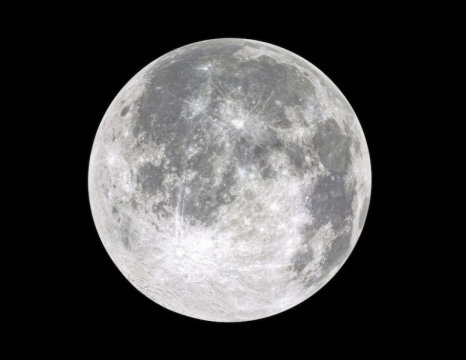HOME
One more clue to the Moon's origin

Humankind has maintained an enduring fascination with the Moon. It was not until Galileo's time, however, that scientists really began study it. Over the course of nearly five centuries, researchers put forward numerous, much debated theories as to how the Moon was formed. Now, geochemists, cosmochemists, and petrologists at ETH Zurich shed new light on the Moon's origin story. In a study just published in the journal, Science Advances, the research team reports findings that show that the Moon inherited the indigenous noble gases of helium and neon from Earth's mantle. The discovery adds to the already strong constraints on the currently favoured "Giant Impact" theory that hypothesizes the Moon was formed by a massive collision between Earth and another celestial body.
Meteorites from the Moon to Antarctica
During her doctoral research at ETH Zurich, Patrizia Will analysed six samples of lunar meteorites from an Antarctic collection, obtained from NASA. The meteorites consist of basalt rock that formed when magma welled up from the interior of the Moon and cooled quickly. They remained covered by additional basalt layers after their formation, which protected the rock from cosmic rays and, particularly, the solar wind. The cooling process resulted in the formation of lunar glass particles amongst the other minerals found in magma. Will and the team discovered that the glass particles retain the chemical fingerprints (isotopic signatures) of the solar gases: helium and neon from the Moon's interior. Their findings strongly support that the Moon inherited noble gases indigenous to the Earth. "Finding solar gases, for the first time, in basaltic materials from the Moon that are unrelated to any exposure on the lunar surface was such an exciting result," says Will.
Without the protection of an atmosphere, asteroids continually pelt the Moon's surface. It likely took a high-energy impact to eject the meteorites from the middle layers of the lava flow similar to the vast plains known as the Lunar Mare. Eventually the rock fragments made their way to Earth in the form of meteorites. Many of these meteorite samples are picked up in the deserts of North Africa or in, in this case, the "cold desert" of Antarctica where they are easier to spot in the landscape.
News Source